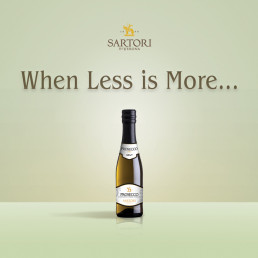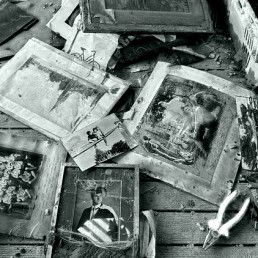To Juliet’s question, “What’s in a name?”
Sartori would answer, “Everything”
If there’s one thing we love as much as a good glass of wine, it’s telling the stories that are behind it and Sartori di Verona has been a quiet over-achiever in our midst. A bit of a golden child, it’s filled the glasses of many a kiwi with its phenomenal wines over the years, but without a doubt it’s their Prosecco that has won the hearts of us all so effortlessly.
You’ve very likely tried it, you’ve very likely enjoyed it, so let’s take a moment to honour Sartori di Verona – the Italian powerhouse with a long history of making exceptionally friendly wines.
Sartori di Verona - A Family Legacy Spanning Four Generations
The First Generation – The Patriarch:
In the late 1800s, Pietro Sartori’s trattoria was a place that could not be missed for merchants, small industrialists, and businessmen of the area. Pietro could never lack the best ‘Rosso Veronese’, (as it was called back then).
It was this inn and its strategic location that would eventually have Pietro turn his hand to winemaking: the daily pouring over the counter and the face-to-face with the public made it necessary to have a steady supply of wine that was sufficient in both quantity and quality – so in 1898, the same year his son Regolo was born – Pietro purchased his first barrels and established the house of Sartori.
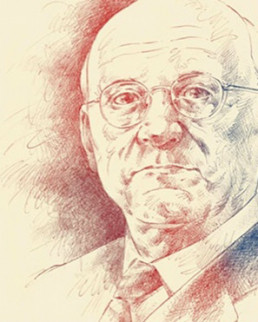
In those days, horses were the main mode of transportation, and Pietro rode everywhere in his new role as a merchant, determined to find opportunities to expand business – in Verona, in Brescia, on the shores of Lake Garda, and lower Trentino.
After 26 years, his work was paying off and business was booming, allowing Pietro to purchase Villa Maria, complete with vineyards on the grounds and “arele” racks for drying grapes.
The Second Generation – The Leader:
Pietro’s son, Regolo, now a young man keen to follow in his father’s footsteps, officially took over the helm in 1934.
Regolo, who was an Air Force officer in World War I, sold the trattoria to further focus the family’s efforts on their blossoming future in win. and registered the brand featuring the figure of Cangrande della Scala – an Italian nobleman of the della Scala family that ruled Verona from 1308 until 1387 – and a symbol of the city of Verona.
Fun Fact: The dedication to their city’s icon remains steadfast, and Sartori has funded the conservation and maintenance of the iconic monument from 2021 and will until 2034

A true gentleman devoted exclusively to his profession and his family, Regolo was regarded as a rather talented wine broker with an extraordinary palate.
Regolo established Villa Maria as the winery’s headquarters in 1947, from which he tirelessl guided Sartori di Verona’s recovery from the WWII Nazi occupation and destruction of the winery and vineyards.
Regolo used to personally prepare his wines for his customers, who, at the end of the “composition” would affix their signatures on the barrel, confirming their approval of the blend.

The Third Generation – The Growers:
Sadly, in 1952, Regolo died at just 54 years old. His two young (and grieving) sons – Pierumberto and Franco – rallied together to preserve the legacy of their father and grandfather at just 22 and 19 years old.
They proved themselves to be worthy heirs with a strong performance in the 1960’s. Sartori released its first official ‘Amarone’ wine and began exports to international markets under the brothers’ keen eyes.
Over the course of his career, Pierumberto found a friend in one Giancarlo Lechthaler, Director of the Cantina Sociale di Colognola. They studied and visited one another and eventually established a bond of mutual esteem. This connection would go on to help the next generation with the Sartori’s ever-evolving quest to define excellence in Italian wines

The Fourth Generation – The Modern Man:
Pierumberto and Franco retired at the turn of the millennium, and brothers Andrea and Luca Sartori stepped up to the fore. The transition coincided with a crucial turning point for Sartori di Verona, with the Sartoris officially joining the Board of Directors of the Colognola ai Colli winery that Pierumberto had sown the seeds for and an excellent foundation for Andrea & Luca to build upon.
This partnership gave the Sartori family the coveted ability to work with over 800 farmers and growers tending 6,200 acres of high-quality grapes in Soave and Valpolicella. Andrea explained,
“People thought we were crazy, but for the first time, we had the ability to do significant projects from the ground up and farmers now owned a piece of our company.”
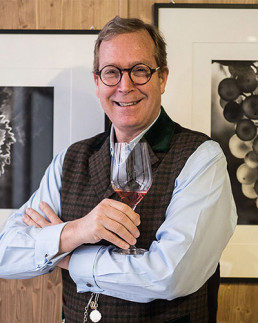
Andrea Sartori is now the current president of Sartori di Verona. He enjoys Cuban cigars, has a mean golf swing, and even speaks with a slight Midwest twang – all of these were honed over two decades of travelling throughout the US – but don’t let that fool you, Italian wine runs through his veins and he’s proud of his family heritage. Andrea even served two terms as president of Italy’s principal wine producers’ trade group, the Unione Italiana Vini (Italian Confederation of Vine & Wine), from 2004 through May 2010.
Andrea had started his foray into the family business after completing his degree in business and honing his English skills at New York’s Columbia University. He returned and started selling his family’s wines, but Andrea had been bitten with the travel bug. His wanderlust led him to focusing on expanding the market abroad with his boots on the ground in the US, Canada and Europe.
Sartori’s partnership with Cantina Sociale di Colognola was particularly useful in this growth, and together they were able to start looking at bigger picture goals, including approaching Mauro Braidot of Mont’Albano in Friuli Grave with the vision of focussing on organic cultivation and bringing it to the world.
It also opened the door to bringing on Franco Bernabei, a fifth generation winemaker as a consultant. Franco – a Veneto man born and bred – took on the project because he wanted to work with a family that “paid considerable attention to the history and heritage of Italian wines.”
Andrea’s worldly vision, bolstered by this partnership, has been very successful for the Sartori family and today, Sartori de Verona is one of the few Italian producers who have total vertical integration and self-independence with 2,000 hectares (HA) of vineyards and ever-expanding state-of-the-art production facilities, and its international market represents over 80% of its sales in over 50 countries.
Sartori di Verona’s Golden Child: Prosecco
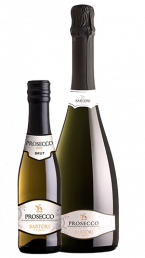
Sartori di Verona
Prosecco NV
- Available in both 750ml and 200ml
- 11.5% ABV | 100% Glera | Organic
- Top 7% of Wines in the World on Vivino
- Soft pressing of grapes harvested around the middle of September, controlled temperature during fermentation. The base wines undergo a second fermentation in a sealed vat according to the Charmat method in order to retain freshness and primary characters.
4 Stars: “In the late 1800’s Sartori’s trattoria was the place to frequent if you were a merchant, trader or weary traveller hunting for hearty food, good wine and a comfy place to camp. As the family concentrated more on wine, hospitality remained their focus, which is why their proseccos are especially friendly. Wild apple and acacia aromas with lemony, creamy characters, a biscuity backbone and cloud-like complexity – it’s outstanding…” – Yvonne Lorkin
Sartori di Verona’s Sustainability

It would be all too easy for such a large producer to stick their head in the sand about being ethical around environmental impacts and social responsibility, but Sartori fervently champions an eco-conscious mindset (which in our opinion, makes their prosecco taste all the more delicious. Notes of apple, acacia and social responsibility perhaps?)
Working with as many brands as we do, we see a lot of environmental statements and declarations. Wineries in both the old world and the new are taking their impacts seriously and we love to see it, but Sartori’s mission is detailed and surprised us in its scope. Their sustainability report and goals span across no less than 29 pages!
“For us at Casa Sartori 1898, a Sustainability Report is more than just a mere set of numbers and data. It represents much more. It’s a declaration of our love for our work, and our efforts to improve each and every day. But it’s also a declaration of our love for our region, Valpolicella, which continually gifts us the bounty of its extraordinary fruits.”
Aside from investing in and distributing Mont’Albano wines, which are all organic and were pioneers of the movement in the 80’s, Sartori aims to achieve certification across their entire portfolio. They’ve chosen to work toward a Certification in accordance with the SOPD Equalitas
sustainability standard, which encompasses all Sustainability aspects of the wine supply chain: not just the vineyards but the Organisations, Products, and Designations of Origin (SOPD).
Fun Fact: Sartori feels strongly about women’s issues. They have established a range called Fira, and with every bottle sold Sartori di Verona supports the reintegration into work of women who have been the victims of violence, through the work placement funding they provide to D.i.Re. – the National Womens’ Anti-Violence Network, allowing these women economic independence and freedom.
They also support Isolina e, an organisation whose mission is to address the very serious human, social, cultural and political emergency caused by the devastating phenomenon of femicide. The Isolina organisation takes its name from Isolina Canuti, a young Veronese woman murdered in the early 1900s by an army captain in an attempt to hide the fact she was pregnant.
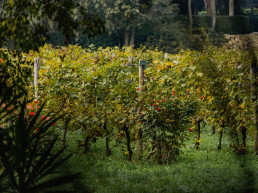
Sartori also believes that sustainability isn’t just environmental, it’s a much more holistic and broad concept that encompasses three pillars: environment, society and economy. They explain that by balancing the social, ecological and economic aspects they can ensure their long-term economic viability while respecting and safeguarding important environmental and social values.
“We are aware of the social responsibility current times demand of every brand, and we feel this imperative not as an imposition, but as a duty, and as an opportunity to drive improvements… We think of ourselves as a “human brand”, made up of values, emotions, and connections – and not mere possessors of technical skills and abilities. We are committed to creating friendly, supportive conditions for our people.”
Their efforts have not been in vain. So far,they have;
- Reduced their use of strong disinfectants by 88%
- Reduced their energy consumption by 8.2%
- Reduced their waste production by 66%
- Increased the compensation rate between in and out going employees (thanks to the policies of team increase and renewal) by a whopping 233%
- 100% of energy used in their wine shop is from renewable energy sources
Fun Fact: Sartori collaborates with organizations that foster the integration of disabled people into the workforce through aiding accessibility, such as the catering industry.
Villa Maria
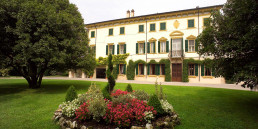
We can be wine nerds and architecture nerds at the same time, right? It’s hard not to be both at Sartori. Villa Maria is the stunning ancestral homestead originally purchased by Pietro when he was starting his journey into wine and remains the Sartori headquarters.
It is a wonderfully refurbished 18th-century residence right out of an Italian story book, set amongst beautiful grounds including a centuries-old park with ancient trees. The original vineyard that came with the property is still producing and the grapes make up the Amarone della Valpolicella Classico Riserva Corte Brà releases.
They host functions at the Villa, with it being a popular wedding and event venue, but they are particularly proud of the cellar tours and tastings they conduct – showcasing the concrete tanks and oak barrels, as well as the beloved drying lofts where they conduct the ancient traditional Appassimento practice.
Prosecco in the Market
We know prosecco is an incredibly popular choice for consumers across all channels, and why wouldn’t it be? It’s accessible, food-friendly and very affordable in comparison to the sparkling offerings from other regions. It may very well be the king of quaffers.
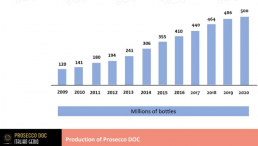
So what are the numbers? In 2021, The Wine Economist reported in their article ‘Anatomy of the Prosecco DOC Boom’ that the volume of Prosecco DOC global sales more than doubled over the previous decade. In this report, Mark Veseth also goes on to emphasize that it’s an impressive feat considering the ‘stagnant market’. Wine consumption globally has not seen dramatic growth at all, and in fact some numbers have it declining slightly, so to maintain growth within the sector is notable.
“About the only wine market segments that have shown sustained growth have been sparkling wines (especially Prosecco), Rosé wines, and Sauvignon Blanc from New Zealand. Almost all other segments have been relatively flat or down.”
In an article closer to home, NZ Herald’s Business Reporter Aimee Shaw (paywalled) writes ‘Prosecco sales go through the roof – European craze making its way to New Zealand’ in 2020. In it, Shaw analyses data from Neilson that suggests in the 12 months prior, prosecco sales in NZ had increased 40%, which was high even by sparkling standards (which had increased 10% overall in the same period.)
We are aware drinking trends over the Covid lockdown period are generally outliers as people switched up their routines, but it does reflect a trend we’ve been seeing for a while in people choosing to drink sparkling wine more casually than reserving them for wedding toasts and anniversary dinners.
NZ Winegrower notes the same trend, and points out that an IWSR (International Wine & Spirit Research) report notes that stellar growth stats in the United States might be partially down to a “pent-up demand” for celebrations after the lockdowns of Covid-19, but the trend is largely about changing attitudes, “with the drink moving away from exclusive association with formal events and special occasions, to one that can be enjoyed in more relaxed contexts and more frequently”.
The Other Sartori di Verona Products
Prosecco may be the ‘it’ product of Sartori portfolio in New Zealand, but their other offerings are definitely worth a try and are a merit-worthy display of the indigenous grape varieties and traditional local winemaking practices that Sartori di Verona strive to do justice to;
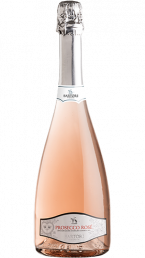
Sartori di Verona
Erfo Prosecco Rosé Brut DOC 2021
- 11% ABV | Glera 85%, Pinot Noir 15%
- Softly pressed and fermented at controlled temperatures for 60 days
18+ Points: “Medium-light bodied, aromas of red berry melded with nectarine, orange zest and a creamy lees complexity. The wine is dry with subtle, with a clean, buoyant palate, and subtle fruit notes linger with fine acidity. This Prosecco Rosé is elegantly presented with a dry, fresh palate and a lightly creamy mouthfeel.” – Candice Chow
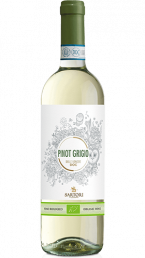
Sartori di Verona
Pinot Grigio delle Venezie DOC 2023
- 12% ABV | 100% Pinot Grigio | Organic
- From hilly vineyards in the Tre Venezie Region.
“Pale straw in colour; the nose reveals heady scents of pear and ripe apple, with floral and citrus notes. Full bodied in the mouth, with a dry and flavourful finish reminiscent of tropical notes. An excellent aperitif but also a perfect companion to seafood starters, fish dishes, soups and white meats.” – Winery

Sartori di Verona
‘Rerum’ Recioto della Valpolicella DOCG Classico 2018
- 500ml bottle
- 13.5% ABV | Sweet Wine
- 50% Corvina Veronese, 30% Corvinone, 15% Rondinella, 5% Other indigenous grape varieties
- The grapes are carefully selected in the vineyard, put in small crates and dried in lofts for about 4 months.
- They are then crushed and destemmed and fermented in stainless steel tanks. The extremely slow fermentation lasts until late spring giving the wine its characteristic and pleasant sweetness. It is then refined in large oak casks for 6 months.
- After bottling the wine rests for at least 2 months before release.
92 Points: “Bright ruby-violet. Open-hearted and fragrant nose, of violets, blackberries, freshly cut peach, cherry syrup. On the palate it shows itself with plenty of sweetness and fine play, balanced and with dancing acidity, encouraging the next sip.” – Falstaff
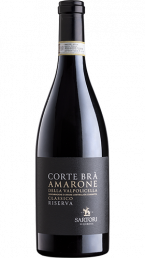
Sartori di Verona
‘Corte Brà’ Amarone della Valpolicella DOCG Classico Riserva 2016
- 15.5% ABV | 60% Corvina Veronese, 20% Corvinone, 15% Rondinella, 5% Oseleta
- From the original vineyards of the Villa Maria Casa Sartori Estate purchased by Pietro Sartori in the 1920s
- The grapes are rigorously selected in the vineyard, hand-picked, placed in small boxes and then taken to the large drying loft, where they remain to dry for about 3 months. In this phase the weight loss of the berries is about 30-40%.
- The bunches are then destemmed, softly pressed and fermented until the desired structure and alcohol content are achieved. The wine then ages for 5 years in small and medium-sized oak barrels.
- The bottle refining lasts for at least six months.
91 Points: “A nuanced bouquet of lavender and violet pastille giving way to dried blueberries. This sweeps across the palate with silky textures and a wave of mineral-tinged red and black fruit that slowly saturates toward the close. It finishes with admirable length and a chewy concentration as a pleasantly bitter tinge of dark chocolate gradually fades.” – Vinous
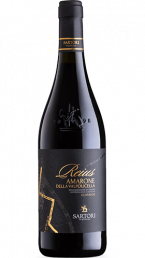
Sartori di Verona
Reius Amarone della Valpolicella Classico DOCG 2016
- 15% ABV | 50% Corvina Veronese, 30% Corvinone, 15% Rondinella, 5% Croatina
- The grapes are hand-picked and carefully selected, put in small plastic crates and dried in ventilated rooms for about three months. When they reach the perfect grade of dryness they are destemmed, pressed and fermented in stainless steel tanks.
- The fermentation lasts for about 30 days. After 12 months in concrete tanks, where it undergoes malolactic fermentation, the wine is transferred to oak casks of medium and large size for at least three years.
- After bottling the wine refines another 6 months.
“Aromas of plum, black cherry and blueberry compote lead the way in this wine. The palate has notes of game, savory spices, anise, and leather. The wine has fine and developed tannins making this wine an easy-to-drink Amarone.” – Wine Enthusiast

Sartori di Verona
Amarone Della Valpolicella DOCG 2018
- 15% ABV | 50% Corvina Veronese, 30% Corvinone, 15% Rondinella, 5% Other indigenous grape varieties
- The carefully hand-picked and selected grapes are put in small plastic crates and dried in ventilated rooms for about three months. When they reach the perfect grade of dryness they are pressed and fermented in stainless steel tanks. The fermentation lasts for about 30 days.
- After a period in concrete tanks, where it undergoes malolactic fermentation, the wine is transferred to large oak casks of medium and large size for 3 years.
- After bottling the wine refines for at least 6 months.
“Honestly, this is one of the best reds, local or imported, that I have sampled in a long time. Reminds me very much of Montepulciano Brunellos that I was lucky enough to sample in Tuscany many years ago. Soft and gorgeous. Supple and ripe with spiced cherry, dark plum, baba rhum, almond toffee and a hint of tawny port. Buy now. Before I do. Food match – Italian tomato-based pasta. Or by itself.” – Phil Parker, ‘Witch Doctor’
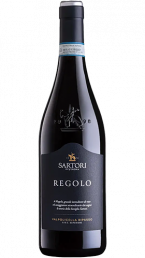
Sartori di Verona
‘Regolo’ Valpolicella Ripasso DOC Classico Superiore 2021
- 14% ABV | 60% Corvina Veronese, 25% Corvinone, 15% Rondinella
- Named for Regolo Sartori of the second generation
- Careful grape selection, pressing and destemming followed by temperature-controlled fermentation for about 8-10 days, give the starting point of this wine.
- The structure and longevity that characterize it are the result of the traditional “ripasso” technique during which the wine is “re-passed” on the Amarone pomace. During this second fermentation the wine receives part of the characteristics that are typical of Amarone.
- After the malolactic fermentation, the wine ages apx. 2 years in medium and large barrels.
- After bottling, the wine ages for at least 6 months in the bottle.
“Bright garnet red wine, intense and persistent bouquet, dry and velvety flavour with hints of cherry and small red fruits. Rich body, slightly tannic and very harmonious.” – Winery
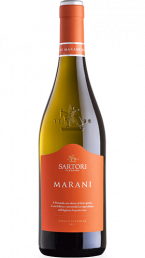
Sartori di Verona
‘Marani’ Bianco Veronese IGT 2022/23
- 13.5% ABV | 100% Garganega
- The wine is named after Regolo Sartori’s wife, Fernanda Marani, and is their “Super-Venetian” white
- From a 9.5 hectare vineyard with volcanic shallow soils and 30+ year old vines
- Harvested and selected by hand, 30% of the grapes dry for about 20-30 days in large ventilated rooms to help reduce the percentage of water and the concentration of sugars contained in the berries. Once the fresh grapes have also been harvested, after the crushing and destemming follows a short cold skin maceration. At the end of fermentation, 50% of the must is aged in tanks on its own fine lees and the other 50% in barrels of 30 hl oak for 6-7 months.
- The wine ages in the bottle for at least 6 months.
“Intense golden colour, on the nose it unveils fragrances of yellow and exotic fruits with an unmistakable note of honey. On the palate the wine is balanced, elegant and harmonious, in perfect balance with the bouquet.” – Winery

